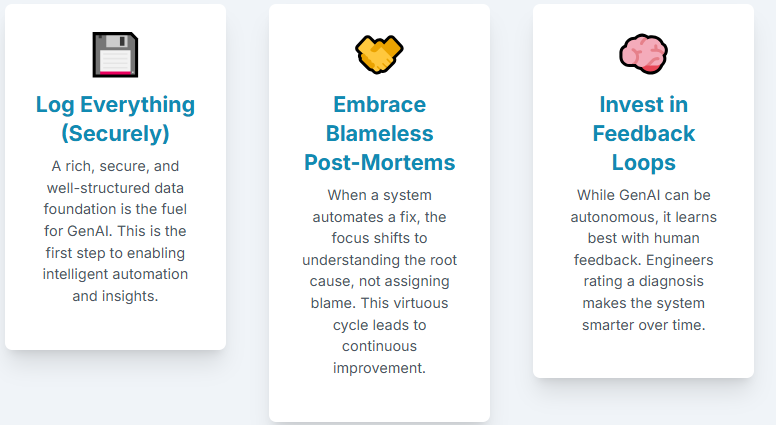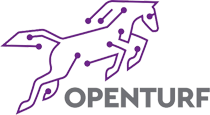The digital world is more complex than ever. With cloud-native, microservices-based architectures, and a tsunami of telemetry data, IT operations teams are drowning. Traditional monitoring—relying on static dashboards and rule-based alerts—is no longer enough. The “alert fatigue” is real, and the time it takes to identify and fix issues (MTTR) is a constant battle.
Enter AIOps, a field that promised to use artificial intelligence to automate IT operations. For years, AIOps was primarily about anomaly detection and event correlation. But a new era is dawning. Driven by the recent breakthroughs in Generative AI (GenAI), AIOps is transforming from a reactive tool into a proactive, intelligent system that can not only predict problems but also fix them autonomously. This is the AIOps evolution: moving beyond passive data analysis to active, automated remediation.
The Problem with Yesterday’s AIOps
Before, AIOps was a critical but often limited tool. It excelled at:
- Anomaly Detection: Pinpointing when a metric (e.g., CPU usage) deviated from its normal baseline.
- Event Correlation: Grouping related alerts from different systems (e.g., a spike in server errors and a drop in database connections) to identify a single root cause.

While powerful, these methods were still largely reactive. They told you what went wrong, but often not why, and almost never fixed it without human intervention. The human-in-the-loop was always required to sift through the correlated data, formulate a plan, and execute the fix. This is where GenAI changes the game.
The Rise of GenAI-Powered AIOps
The emergence of powerful Large Language Models (LLMs) and other GenAI techniques has fundamentally reshaped the AIOps landscape. Here are the key trends defining this new era:
1. Predictive Analytics for Proactive Problem-Solving
GenAI-powered AIOps now goes beyond simply flagging anomalies. It analyzes historical data—including logs, metrics, traces, and even past incident reports—to predict future system failures before they happen.
- Real-World Example: Imagine a retail e-commerce platform. Traditional AIOps would alert you when a server crashes. GenAI-powered AIOps, however, can predict a potential server crash 30 minutes in advance by identifying subtle, non-obvious patterns in log data and resource utilization that have historically preceded similar failures. It might correlate a series of minor database connection timeouts with a specific code change, and issue a prediction with high confidence.
2. Contextual Alerting and Root Cause Analysis
GenAI-powered systems can now ingest and understand natural language from a vast array of sources. When an alert fires, it doesn’t just show a generic metric. It provides a human-readable, contextual summary of the problem.
- Real-World Example: Instead of a generic alert like [CRITICAL]: DB Connection Pool at 95%, a GenAI AIOps system might generate an alert that says: “Critical: Database connection pool is near capacity. This is likely due to the recent v1.2.5 deployment which introduced an unoptimized query in the user-auth service, causing a spike in resource usage. Please review commit abc1234 for a potential fix.”
3. Automated Remediation and Self-Healing Systems
This is the holy grail of AIOps. GenAI is no longer just for analysis; it’s for action. Systems can now propose and even execute remediation steps autonomously.
- Real-World Example: Following the predictive alert in the e-commerce scenario, the GenAI system doesn’t just stop at a diagnosis. It can suggest a fix based on its analysis of past solutions. For a known issue, it might even trigger an automated remediation playbook—like increasing the database connection pool size, rolling back the problematic code, or scaling up the affected microservice—all without human intervention.
4. Natural Language Interfaces and Collaborative Chatbots
GenAI is making observability more accessible to the entire team, not just specialized SREs. Teams can now interact with their observability data using simple, human language.
- Real-World Example: A product manager wants to know why a new feature is performing slowly. They can ask a Slack or Teams chatbot: “What’s the performance of the new checkout feature right now?” The GenAI system can then process this request, query the observability backend, and provide a clear, concise answer with links to relevant dashboards, without the product manager needing to navigate complex monitoring tools.
Building an AIOps-First Culture with GenAI

Embracing this new evolution of AIOps is not just about technology; it’s about culture.
- Log Everything (Securely): To power GenAI, you need a rich, secure, and well-structured data foundation.
- Embrace Blameless Post-Mortems: When the system automates a fix, the focus is on understanding the root cause, not assigning blame. This leads to continuous improvement.
- Invest in Feedback Loops: While GenAI can be autonomous, it learns best with human feedback. Engineers should be able to rate a diagnosis or a remediation action to make the system smarter over time.
The AIOps evolution, supercharged by Generative AI, is fundamentally changing IT operations. It’s transforming the role of the SRE from a firefighter reacting to a crisis into a strategic engineer who builds and fine-tunes systems that can predict and fix problems on their own. By embracing predictive analytics, contextual alerting, and automated remediation, organizations can reduce downtime, cut costs, and most importantly, free up their most valuable asset—their people—to focus on innovation rather than incidents. The future of IT operations is not just monitored; it’s managed, intelligently and autonomously.
Ready to transform your IT operations? Explore how GenAI-powered AIOps can revolutionize your incident management and empower your teams.
